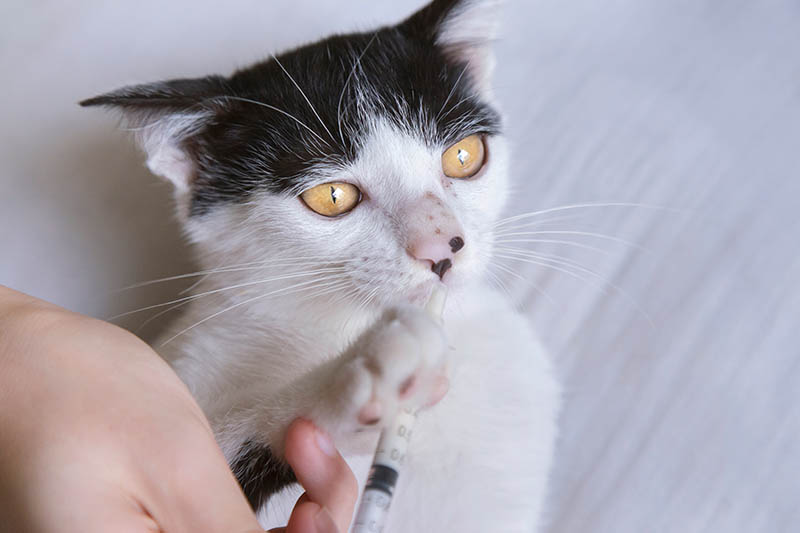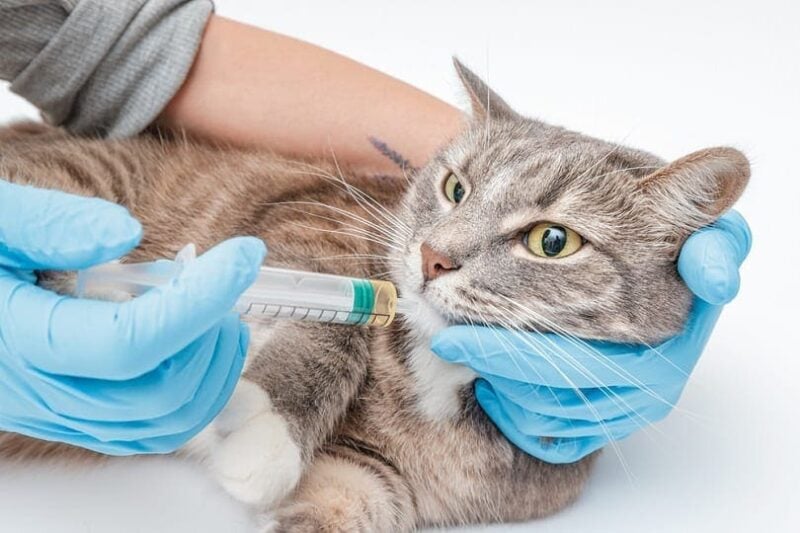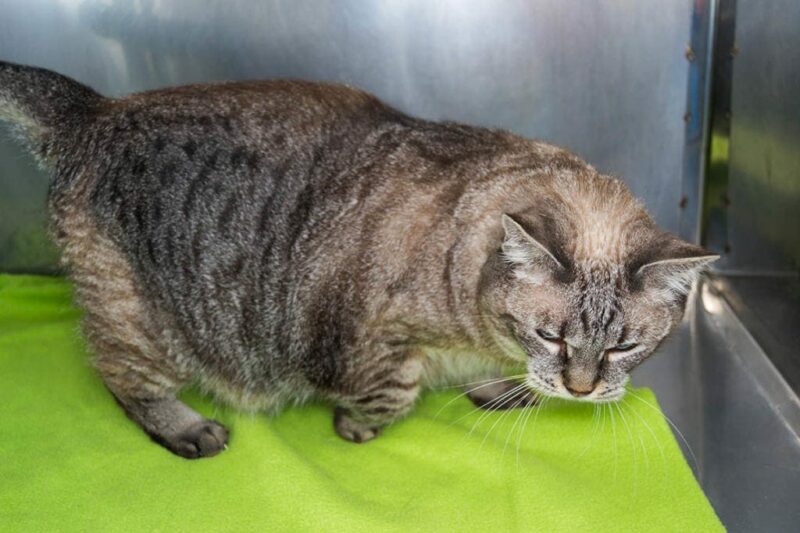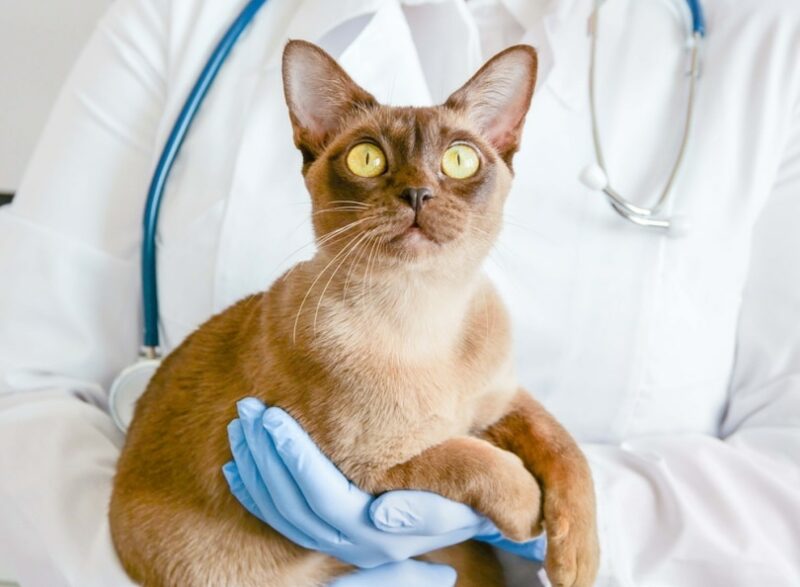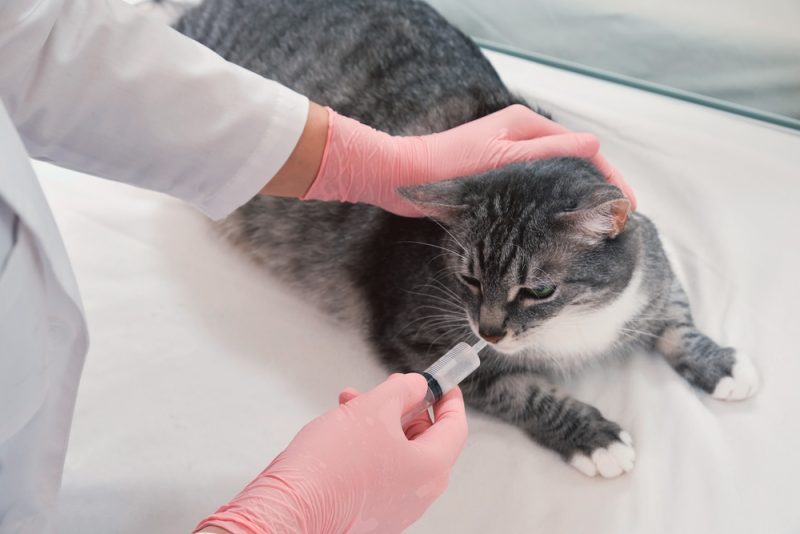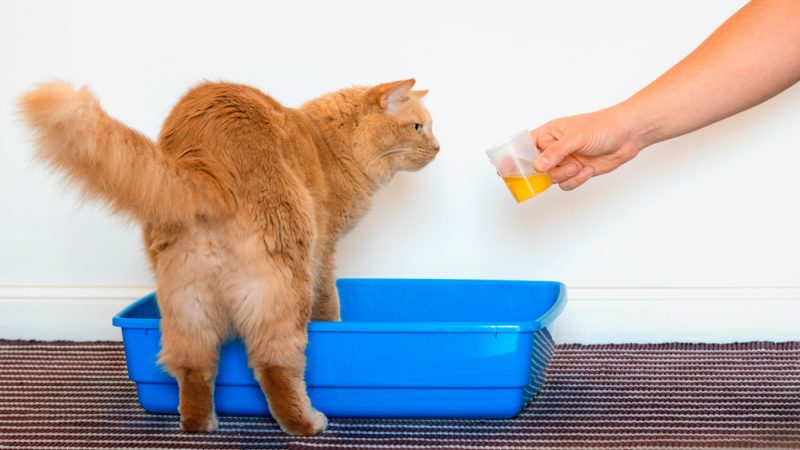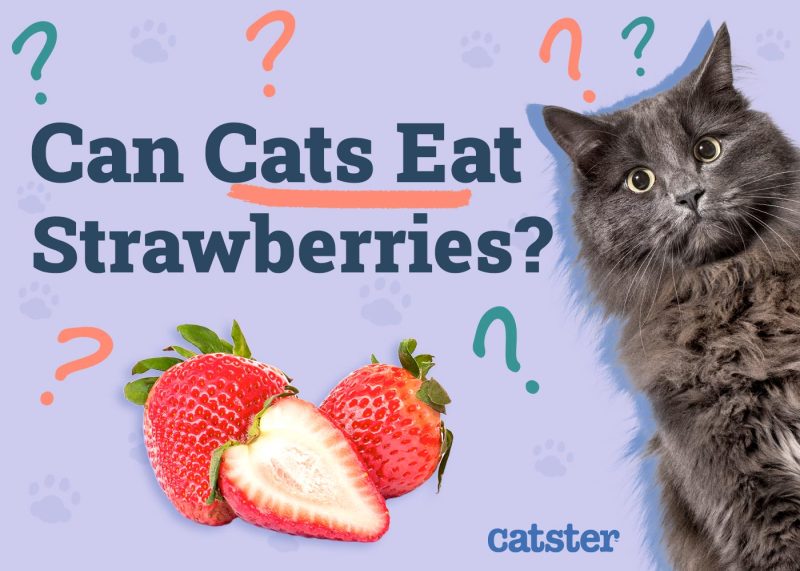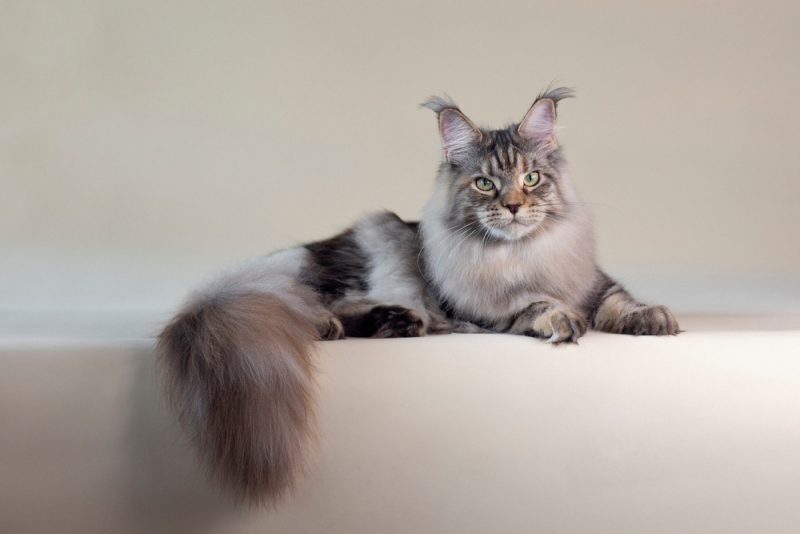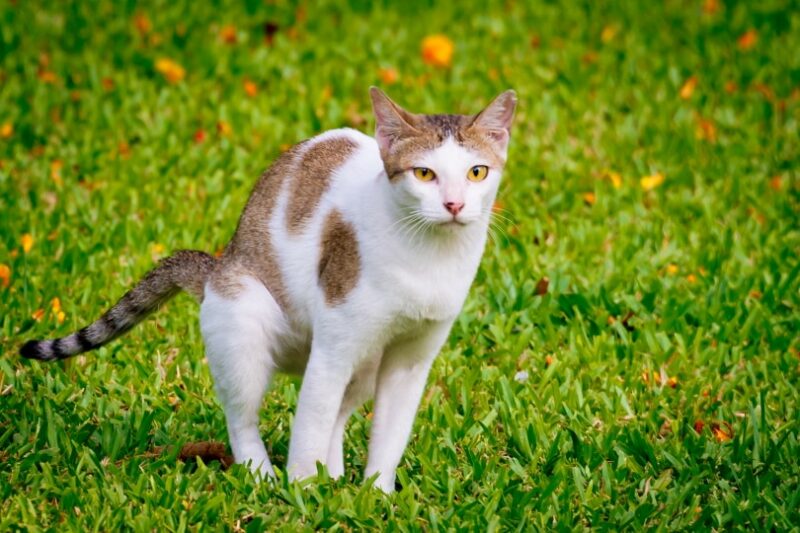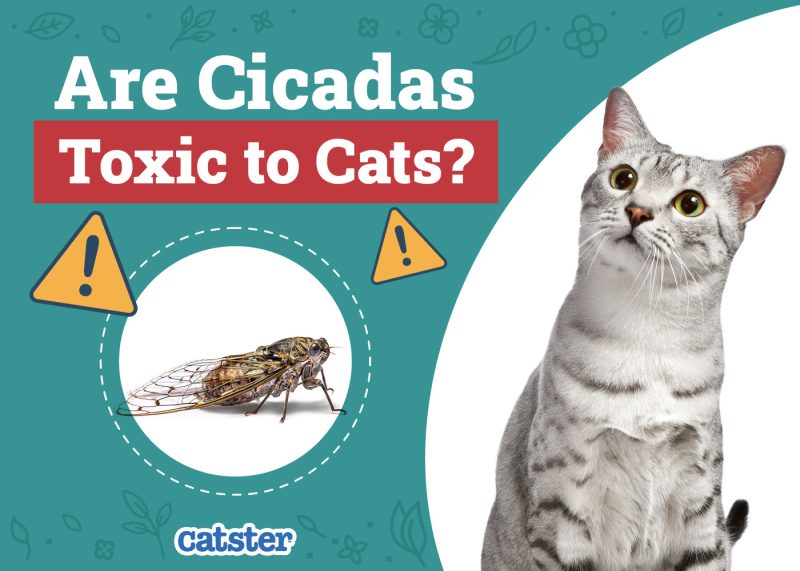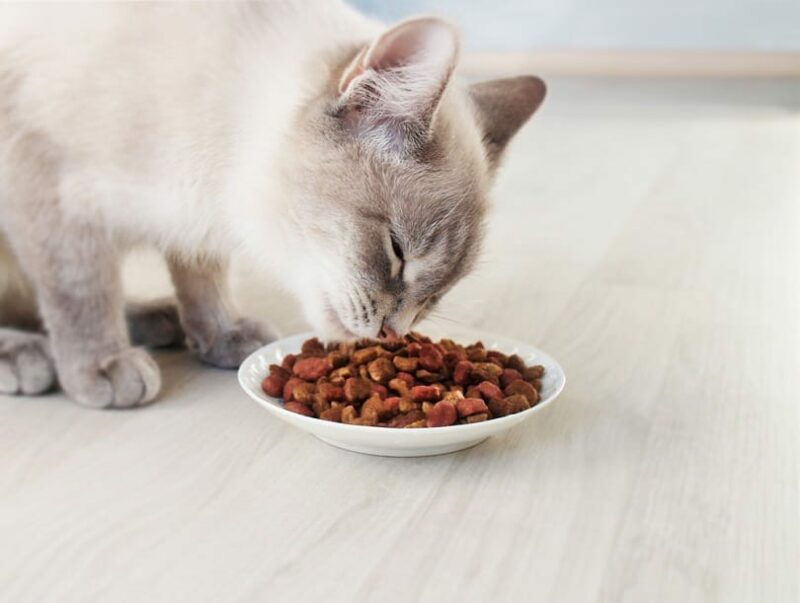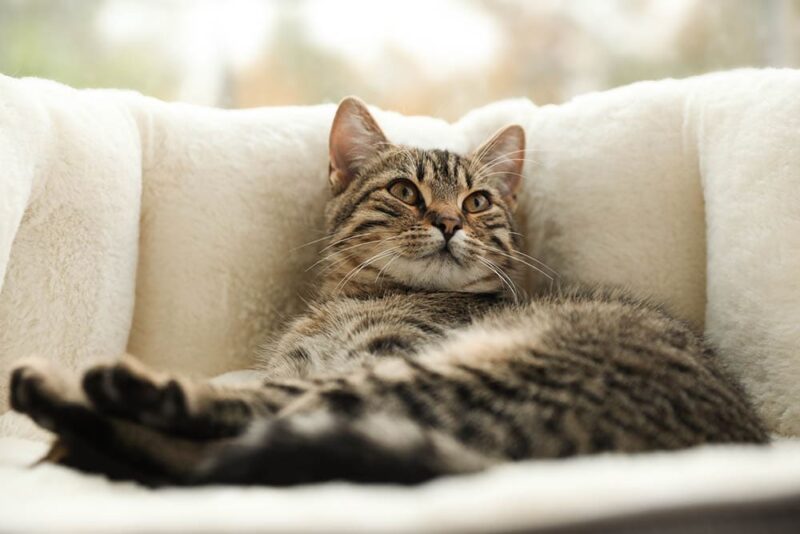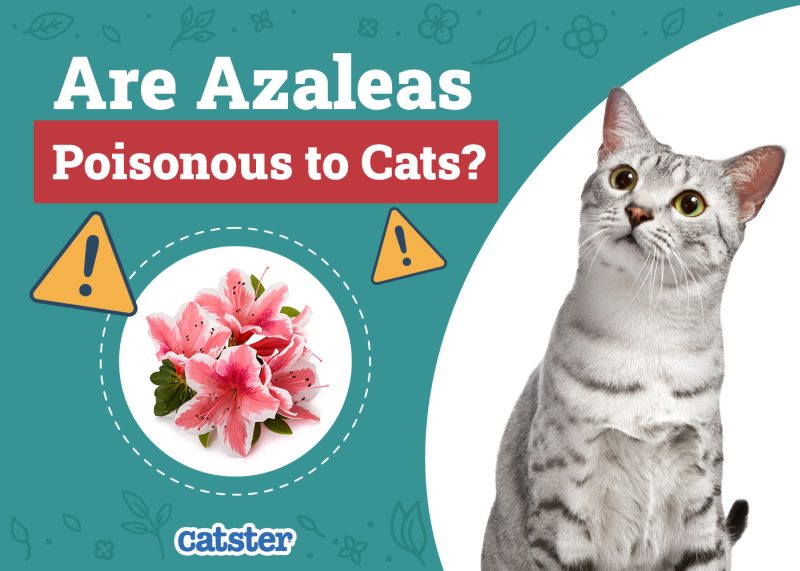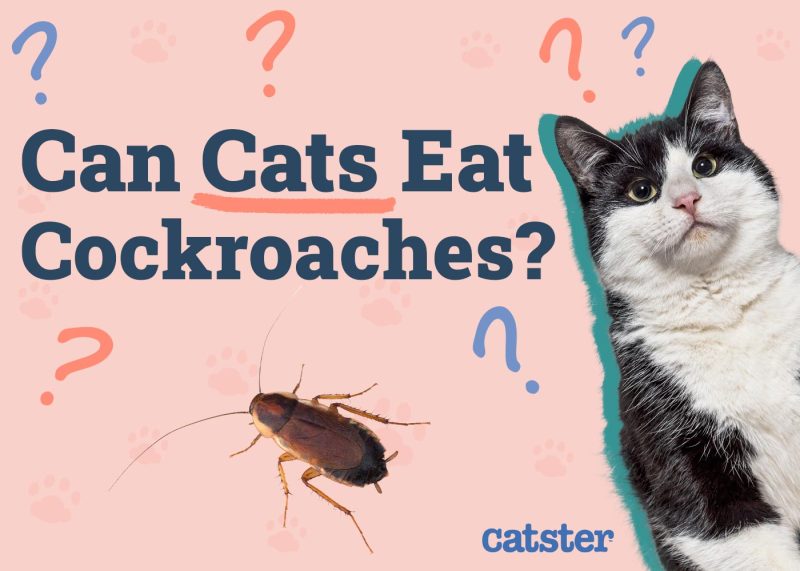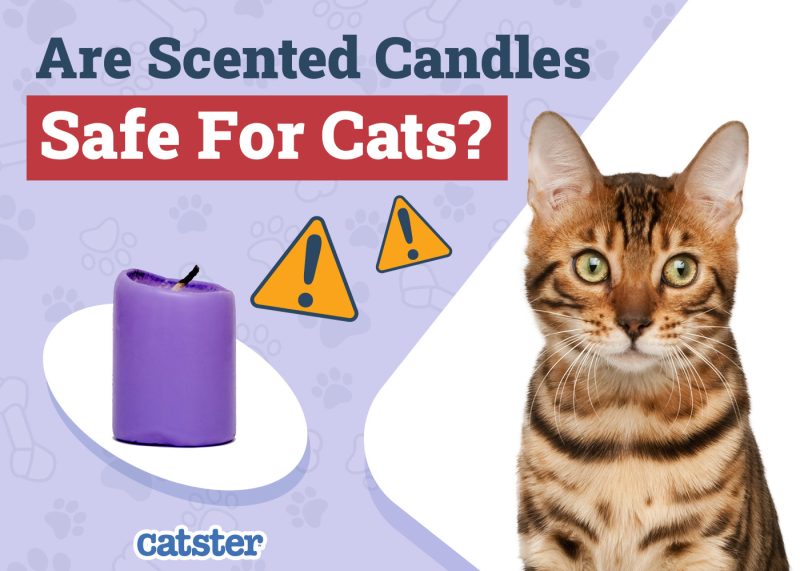In this article
View 2 More +In most cases, cats will thrive on eating regular cat food throughout their entire lives. There are four main diets for cats that people are familiar with: dry, wet, semi-moist, and raw. Dry and raw diets are at opposite ends of the spectrum, with dry diets often being the most processed and raw the least. However, sometimes your cat may need a special diet, and one that few people talk about is the liquid diet. A cat will typically be on a liquid diet when they’re unable to eat normally or refusing to eat.
Read on to find out more about what a liquid diet is and whether it might be something you should consider for your cat.
What Is a Liquid Diet?
As the name suggests, the key difference between a liquid diet and other types of diet is that the food requires no chewing and can be swallowed easily with little effort by a cat. The goal of a liquid diet is to provide a cat with the nutrition that they can ingest and digest easily. The food for this diet usually requires a prescription, so you’ll need to make an appointment with a vet.
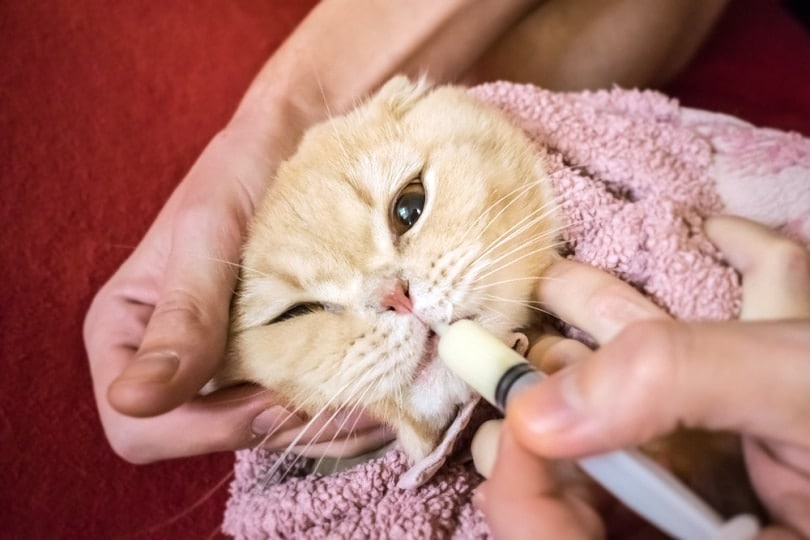
Why Would I Put My Cat on a Liquid Diet?
A healthy cat that is thriving and doing well should not require anything other than normal cat food. A veterinarian is probably going to prescribe a liquid diet for a specific condition. The most common reason a vet will ask you to feed your feline friend a liquid diet is when they are unable to eat normally. Liquid diets for cats aren’t intended to be a long-term solution. Instead, they are used to help cats recover from a tough period so they can return to their regular diets.
Examples of scenarios where a veterinarian may prescribe a liquid diet include the following:
- Your cat had surgery on or injured their jaw and is unable to eat food
- Your cat is incredibly emaciated and cannot move or eat on their own
- Your cat has a severe inflammation of the gums, mouth, or tongue (or a combination of them)
At times, liquid diets may be accompanied with temporarily feeding tubes, which the veterinarian may place on your cat. These tubes are intended to spare you the hassle of opening your cat’s mouth (after all, some conditions are just too painful) and are placed in a way that allows food to be directly sent to your cat’s stomach (via the tube).
When feeding tubes are used, veterinarians often prescribe incredibly nutritious and easily digestible liquid diets for your cat. The purpose of these diets is to help your cat bounce back as quickly as possible and pack as many calories as possible so that your pet only needs to be fed a small quantity of food to meet their nutritional needs.
Long-term liquid diets may be prescribed for cats with severe dental issues, cancer, or end stage kidney disease, to name a few. If your cat is ill, possibly with a serious condition such as kidney or liver problems, dental or mouth issues, or cancer, then regular feeding might not be viable. It will be easier for them to consume watery food. It’s very important that you feed your cat according to a vet’s recommendations – these prescription diets shouldn’t be fed in excess (or in a deficit).
How to Feed Liquid Foods to a Cat
When a vet puts your cat on a special diet, they will include detailed instructions on how to feed your cat. Although the food is a liquid, you can’t expect your cat to drink their food like water, especially if they are ill or recovering—they will likely need your help eating. This is normally accomplished with a syringe, though some cats may lap up the liquid from a bowl.
Eating from a syringe is not natural for your cat, and they will need your help and patience. It will take plenty of time every day for you to sit with your cat and feed them. If the food is too cold, it may be thicker or less palatable, in which case, before putting it in the syringe, you can, in some instances, warm it gently for a few seconds in a microwave and stir it through so there are no hot spots.
However, not all diets can be microwaved, as doing so can change the nutritional composition of the diet, as some ingredients may become denatured due to the heating process. Consult a veterinarian prior to heating up a diet for your cat.
Even though your cat is eating a diet rich in moisture, you should still provide your cat with access to water so they can drink more if they need it. Most prescription liquid diets come with a recommendation of feeding your cat some water both before and after feeding them the liquid diet.
For more information, please contact a vet directly.
If you need to speak with a vet but can't get to one, head over to PangoVet. It's an online service where you can talk to a vet online and get the advice you need for your pet — all at an affordable price!

If a veterinarian has placed a feeding tube on your pet, they will provide you with care instructions for the tube. It’s very important to follow these instructions precisely, as feeding tube hygiene is of utmost importance to ensure that your pet doesn’t become ill from a contaminated feeding time. Likewise, most liquid diets, while incredibly palatable, also spoil very quickly and have a very short shelf life once opened. Do not use them beyond their intended shelf life.
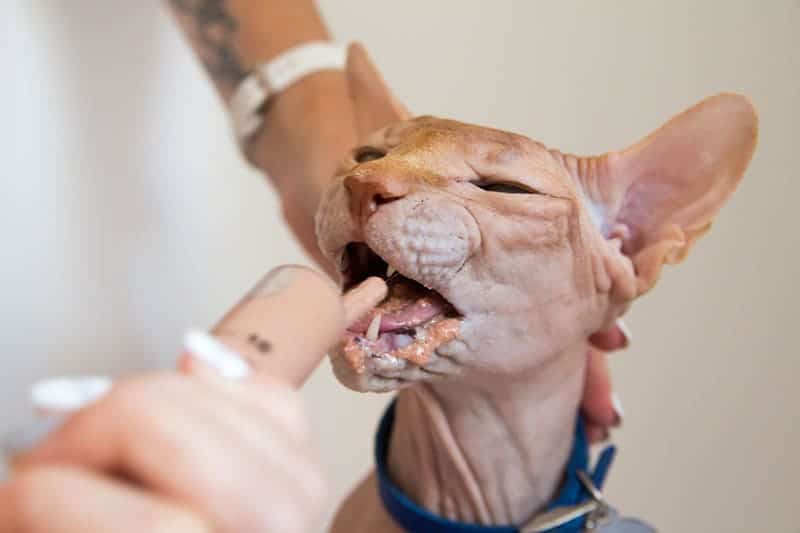
Liquid Foods for Geriatric Cats
One reason that a vet might ask you to feed your cat a liquid diet for an extended period of time is when your cat is getting very old. At this point, they may not be able to handle solid food anymore—it might be because they have lost all their teeth, or they have a fragile constitution and can’t digest heavy foods. If your cat is getting old and not eating, you should consult a vet on whether to switch to a liquid diet.
What to Do When Your Cat Won’t Eat
When your cat doesn’t eat, it can be a worrying time. There are a few things you can do to try to get them to eat.
First, check with a veterinarian to make sure there isn’t a medical reason for their lack of appetite. If there is an underlying health issue, treating that may get them back to their normal eating habits. If your cat has difficulty eating due to a medical reason, the vet may recommend syringe feeding them with liquid food for a period of time.
Second, if there doesn’t seem to be a medical reason, make sure their environment is calm and stress free. A chaotic household or too much change in their routine can lead to a loss of appetite in some cats. Creating a peaceful environment may help them feel more relaxed and ready to eat.
At times, it can help to try offering your pet small meals more often throughout the day instead of large meals. Some cats also prefer wet food over dry food, so you could try changing their diet if they are eating less than usual. You could try further diluting their wet or dry cat food with broth. While this is not a “liquid diet,” it can be a way of enticing some cats to eat and stay hydrated.
Conclusion
It takes some extra time and patience to feed a liquid diet to your cat, but sometimes, it’s an essential part of caring for your cat when they are ill, recovering from surgery, or in their geriatric years. You should always speak to a vet if you have any questions about the diet or your cat’s health. When a cat doesn’t eat, they can become dehydrated and weak, so it’s important to give your cat the care that they need.
Feeding your cat a liquid diet should only be carried out under a vet’s supervision. A successfully administered liquid diet should allow you to give your cat the appropriate care and nutrition for their condition.
Featured Image Credit: Gumpanat, Shutterstock

